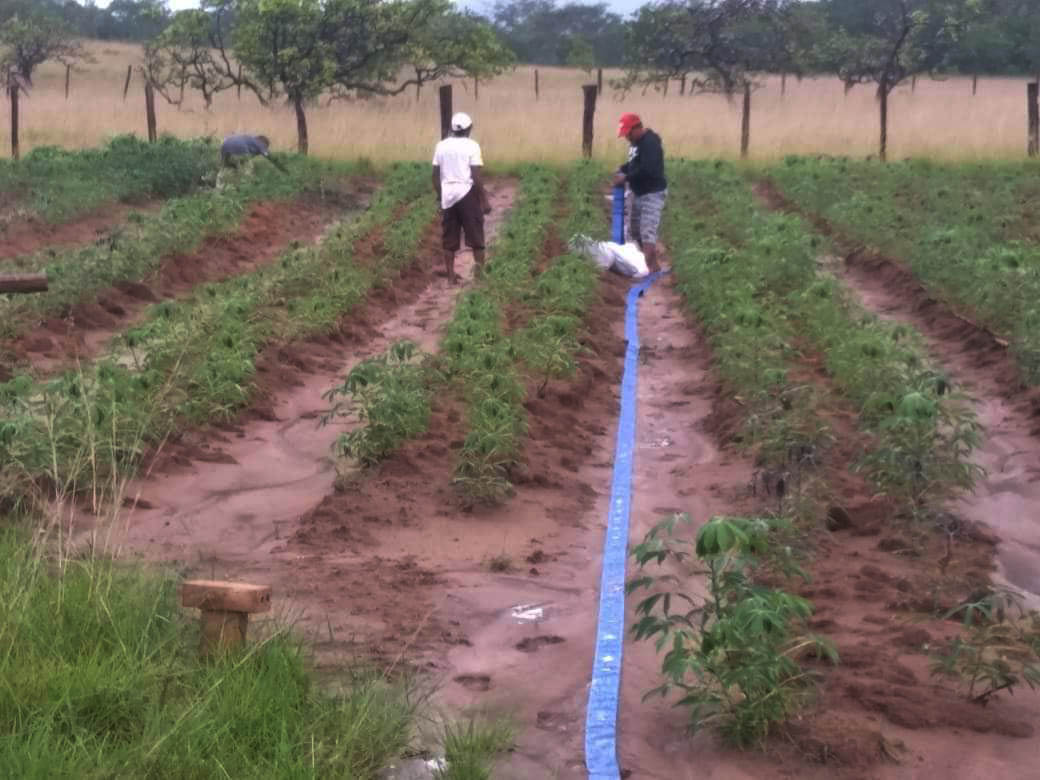As part of its commitment to help communities develop food security strategies to make food production resilient and sustainable, the Ministry of Agriculture is helping cassava farmers to recover after devastating floods almost destroyed the sector.
In a release yesterday, the Ministry of Agriculture stated that through its Agriculture Sector Development Unit, it is currently working with farmers from Sand Creek in Region Nine (Upper Takutu-Upper Essequibo) to develop cassava germplasm as part of its crop breeding, research, and conservation efforts.
This initiative, it was explained, was conceptualised following several visits by President Irfaan Ali and Agriculture Minister, Zulfikar Mustapha, to the region during and after the 2021 floods. According to the release, cassava farmers in the region were adversely affected by the floods which destroyed almost 90 per cent of the country’s agriculture sector. And as a result of the massive cassava shortage due to water damage following the flood, funding was sought to develop the cassava germplasm.
The Ministry also disclosed that it had signed a contract with the Sand Creek Village Council valued at $4 million for the implementation of a cassava germplasm bank and the supply of farm tools support for farmers with funding provided by the Government of Guyana and the International Fund for Agricultural Development (IFAD) under the Hinterland Environmentally Sustainable Agricultural Development Project (HESADP).
Last November, Mustapha also handed over three heavy-duty tractors procured under the ministry’s Rural Agriculture Infrastructure Development Project (RAID) along with planting materials and other inputs to several villages in the region. Further, three tractors with implements including a cassava planter, harrow, a disc plough, and a roam plough were also handed over for use in the region. Farmers from villages such as Shulinab, Meriwau, Sand Creek, and Awarenau, Mururanau, were given cassava sticks, along with other supplies, the release added.
Farmers from the villages of Shulinab, Meriwau, Sand Creek, Awarenau, Mururanau, Rupanau, Katoonarib, Baitoon, Potarinau, Quiko, Parikwarinau, Aishalton, Shea, Taushida and Koshebai (South Pakaraimas) had benefited from breeding bulls and boars to improve their villages’ genetic material; cassava sticks; coconut seedlings; shadehouse materials; as well as an ATV.
On September 8, Stabroek News reported that several Toshaos from regions eight and nine had complained about the scarcity of cassava and that Mustapha said he was aware of the situation and steps were being taken.
During that National Toshaos Conference held last month, the village leaders who spoke to Stabroek News blamed changing weather patterns and foraging wildlife (tapirs or bush hogs) as the primary causes for the problems with their cassava crop. The scarcity of the root crop, according to the Toshaos, is adding to an already high cost of living in the far-flung Indigenous communities.
Toshao Charles Simon from Awarewaunau, Deep South Rupununi, Region 9 told SN that floods earlier in the year had destroyed most of the crops for his village. After the floods receded, farmers replanted the root crop but are now experiencing the El Nino weather system, and the excessive dryness is hastening the rotting of the crop.
Simon also attributed the cassava scarcity to foraging wildlife, a possible consequence of El Nino’s larger impact deeper in the rainforest. Simon said that the food security situation in his village right now is critical. Because of low cassava production, cassava bread and farine production has been significantly scaled back.
Toshao Michael Williams of Annai, North Rupununi, Region Nine said after the floods, cassava crops were replanted but these would not be available for another three months.
Williams told SN that the shortage of cassava has also sent the prices in Annai for farine, cassava bread and casareep skyrocketing. Farine, where available, is consumed by families but is hardly being bought due to cost. Williams said a few months ago, farine was sold at $150/160 per pound, now the same pound of farine costs $400/500.
Another Toshao, Sebastian Scipio of Tuseneng, Region Eight said villagers have to travel to other villages to purchase cassava bread and casareep. Casareep is mostly produced and sold for income generation. A large bottle is sold for $2000, whereas a few months ago, the cost was $1,200/$1,500.
Farming primarily shelters low to non-income families from consumer activities but the shortage of cassava has left these families to face the full brunt of price inflation. Williams, Simon and Scipio told SN that most of their constituents are farmers but because of the scarcity of cassava they now have to depend on shops.






